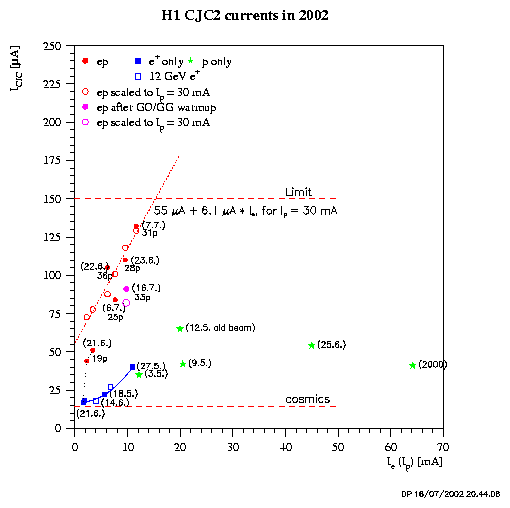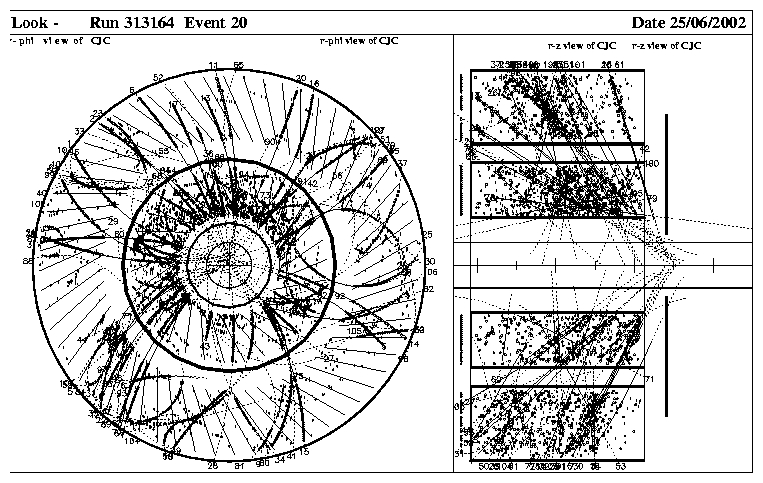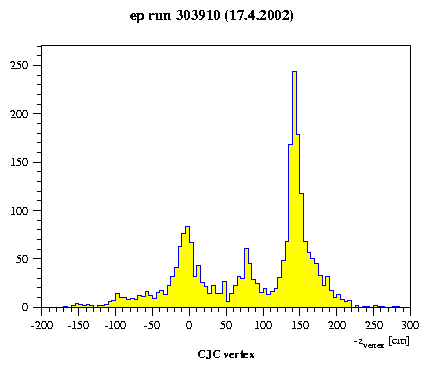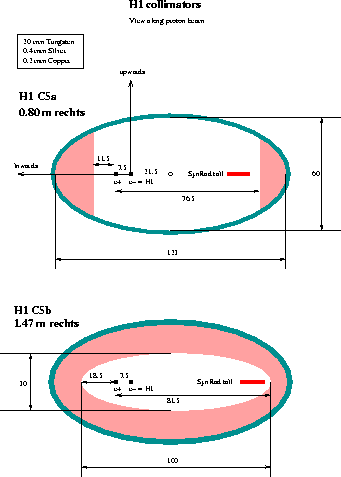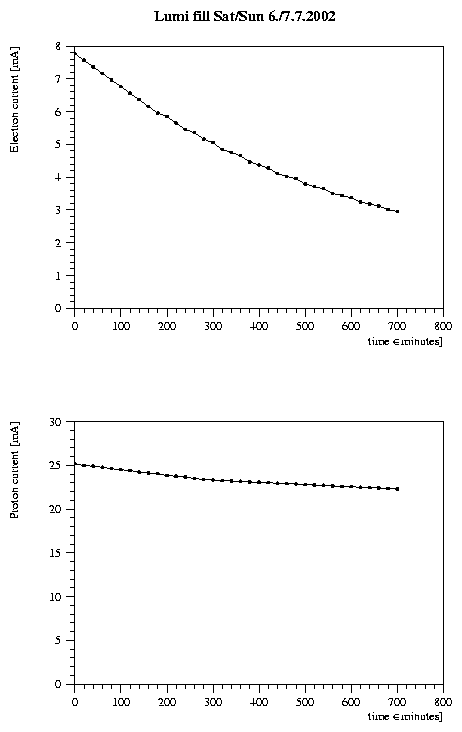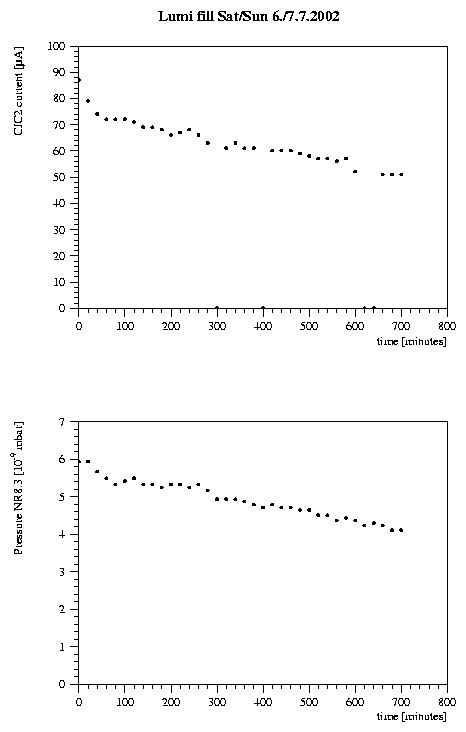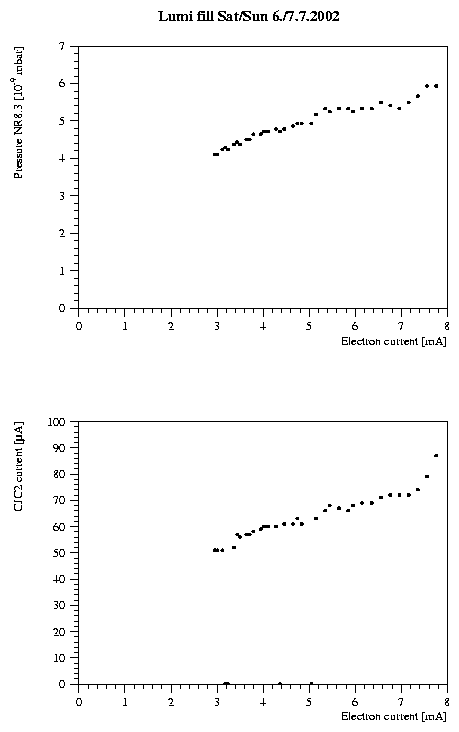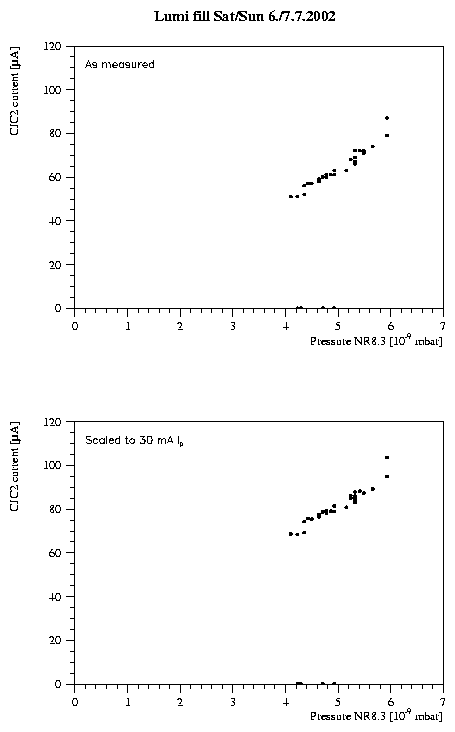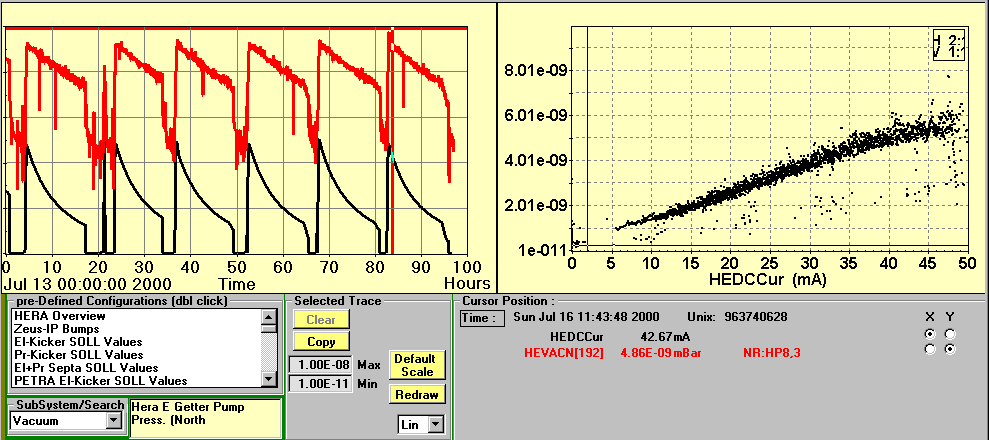We'd like to operate CJC2 below 150 uA.
Protons-only (green stars) are fine. The point from 12.5. was taken with a 21h old proton beam, and after 14h of collisions.
Positrons-only (blue squares) are also OK.
Only points with best synchrotron radiation is properly steering
and collimation are shown.
e+ at 27.5 GeV is not worse than at 12 GeV (blue open
squares), demonstrating that synchrotron radiation can be reduced
to negligible levels.
The contribution from positron-gas scattering remains, with
an apparently quadratic dependendce on Ie.
With ep collisons (red circles) the chamber current is higher than
the sum of the currents from single beams.
The points are plotted vs the e+ current.
The proton current and date are printed next to the symbol.
When scaling to a proton current of 30 mA (open red circles),
all points lie around the red dotted line
with a slope of 6 uA per mA of Ie.
Scaling to 50 mA e+ and 120 mA p leads to a chamber
current above 1 mA, clearly intolerable.
The peak at 0 is due to genuine ep collisions.
The peak at -z = 80 cm is from interactions at C5a.
The peak at -z = 150 cm is from interactions at C5b.
The hadrons originate from proton-gas interactions upstream of H1.
Their rate is high due to the bad vacuum in the presence of
e+ beam.
The CJC was at full HV for 12h.
The positron current dropped from 7.8 to 3.0 mA.
The proton current dropped from 25.2 to 22.3 mA:
The CJC-2 current dropped from 87 to 51 uA.
The pressure at pump NR8.3 (North Right 8.3m) dropped from
5.9 to 4.1 10-9mbar:
Pressure and CJC current (after an initial decay) are proportional to Ie:
And finally, CJC current vs pressure:
The lower plot corrects for the small change in Ip during the fill by scaling to 30 mA.
The pressure must be reduced to about 2 10-9mbar at
full e+ intensity, to allow for a safe operation
of the chamber.
